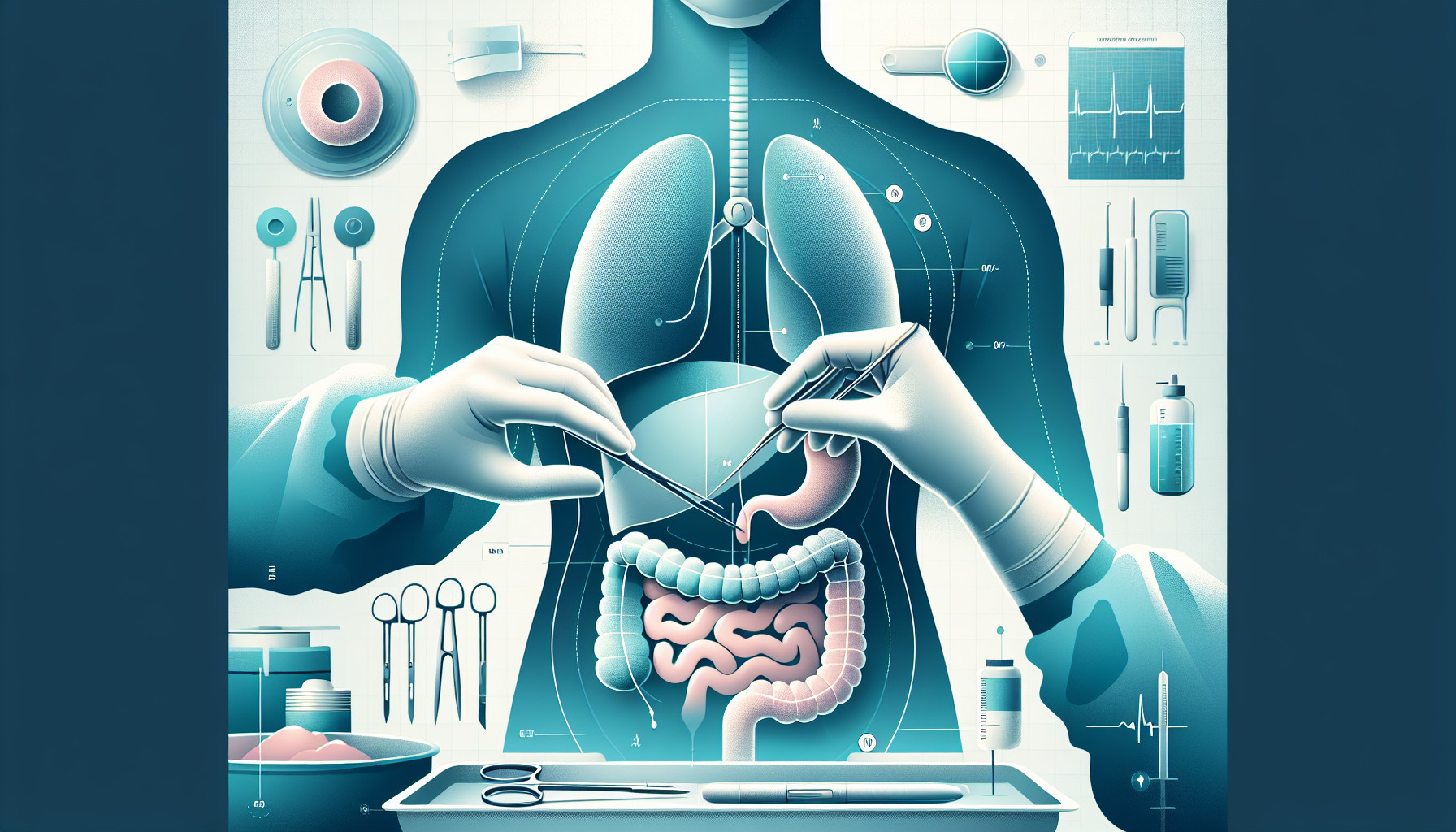Our Summary
This research paper is a review of studies comparing laparoscopic and robotic surgeries for hiatal hernia repairs (HHR) and Heller myotomy (HM), procedures often used to treat digestive system issues. The researchers looked at studies published from 2010 to 2022.
The review included 22 studies involving 196,339 patients. For hiatal hernia repairs, they found that robotic surgery resulted in a slightly shorter hospital stay, fewer cases where surgeons had to switch to open surgery, and slightly lower complication rates. However, these differences were not statistically significant, meaning they could be due to chance.
For Heller myotomy, a procedure to treat a swallowing disorder, robotic surgery led to significantly fewer cases of esophageal perforation (a serious complication where there is a hole in the esophagus) and fewer cases where additional intervention was needed. Robotic surgery also resulted in a slightly shorter hospital stay, but again, this difference was not statistically significant.
One notable downside of robotic surgery was that both types of procedures took longer than their laparoscopic counterparts.
Given the findings, the researchers concluded that both methods are similarly safe and effective. However, they also noted that the quality of the included studies was low to moderate, and called for more high-quality, randomized controlled trials to confirm their findings.
FAQs
- What were the key findings of the research comparing laparoscopic and robotic surgeries for hiatal hernia repairs?
- How did the results of robotic surgery compare to laparoscopic surgery for Heller myotomy procedures?
- What were the limitations noted by the researchers in the studies they reviewed?
Doctor’s Tip
A helpful tip a doctor might give to a patient undergoing hiatal hernia repair is to discuss with their surgeon the pros and cons of both laparoscopic and robotic surgery options. It is important to weigh the potential benefits, such as shorter hospital stay and lower complication rates, against the longer operating time associated with robotic surgery. Additionally, patients should inquire about the surgeon’s experience and expertise with the chosen surgical technique to ensure the best possible outcome.
Suitable For
Patients who are typically recommended hiatal hernia repair include those with symptoms such as heartburn, acid reflux, difficulty swallowing, chest pain, and regurgitation of food. These symptoms may indicate a hiatal hernia, where part of the stomach protrudes into the chest cavity through the diaphragm.
Patients with larger hiatal hernias, recurrent symptoms despite medication, complications such as bleeding or obstruction, or those at risk for complications such as Barrett’s esophagus or aspiration pneumonia may be recommended for surgery.
Additionally, patients with achalasia, a condition where the lower esophageal sphincter doesn’t relax properly, causing difficulty swallowing, may be recommended for Heller myotomy surgery. This procedure involves cutting the muscles at the lower end of the esophagus to help relax the sphincter and improve swallowing.
Ultimately, the decision to recommend surgery for hiatal hernia repair or Heller myotomy will depend on the individual patient’s symptoms, medical history, and risk factors. It is important for patients to discuss their options with their healthcare provider to determine the best course of treatment for their specific condition.
Timeline
- Before hiatal hernia repair:
- Patient experiences symptoms such as heartburn, chest pain, difficulty swallowing, regurgitation of food, and acid reflux.
- Patient undergoes diagnostic tests such as endoscopy, barium swallow, and pH monitoring to confirm the presence of a hiatal hernia.
- Patient may be prescribed medications to manage symptoms and lifestyle changes to reduce symptoms.
- After hiatal hernia repair:
- Patient undergoes pre-operative preparations such as fasting and stopping certain medications.
- Surgery is performed, either laparoscopically or robotically, to repair the hiatal hernia and restore the stomach to its normal position.
- Patient may experience pain, bloating, and difficulty swallowing in the immediate post-operative period.
- Patient is discharged from the hospital after a few days and instructed on post-operative care, including diet modifications and activity restrictions.
- Patient undergoes follow-up appointments to monitor recovery and address any complications.
Overall, the timeline for a patient before and after hiatal hernia repair involves experiencing symptoms, undergoing diagnostic tests, undergoing surgery, and recovering with post-operative care.
What to Ask Your Doctor
Some questions a patient should ask their doctor about hiatal hernia repair include:
- What are the potential risks and complications associated with the surgery?
- How long is the recovery time and what can I expect during the recovery process?
- Will I need to make any changes to my diet or lifestyle after the surgery?
- How experienced are you in performing this type of surgery?
- What is the success rate of this procedure for treating hiatal hernias?
- Are there any alternative treatment options available for my condition?
- What type of anesthesia will be used during the surgery?
- Will I need to undergo any additional tests or evaluations before the surgery?
- How long will the surgery take and how soon can I expect to return to normal activities?
- What is the likelihood of the hernia recurring after the surgery?
Reference
Authors: Awshah S, Mhaskar R, Diab AF, Read M, Coughlin E, Ganam S, Saad AR, Sujka J, DuCoin C. Journal: J Am Coll Surg. 2024 Aug 1;239(2):171-186. doi: 10.1097/XCS.0000000000001074. Epub 2024 Jul 17. PMID: 38497555
